Showing Spotlights 345 - 352 of 556 in category All (newest first):
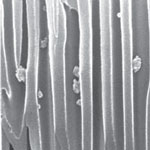 Research to develop sensors that can rapidly detect biomarkers (associated with certain diseases such as cancer) in whole blood, ideally at the point of care, and when the protein biomarker level in blood is very low (i.e. the disease is in an early stage) is being advanced by nanosensor technology. In a recent development, scientists in Spain have developed a rapid nanochannel-based immunoassay capable of the filtering and subsequent detection of proteins in whole blood without any sample preparation. This is the first time that a simple assay to detect proteins in whole blood using nanochannels has been achieved. This is a simple device and set-up that allows nanochannels to achieve such the double functionality of filtering and detection on the same platform.
Research to develop sensors that can rapidly detect biomarkers (associated with certain diseases such as cancer) in whole blood, ideally at the point of care, and when the protein biomarker level in blood is very low (i.e. the disease is in an early stage) is being advanced by nanosensor technology. In a recent development, scientists in Spain have developed a rapid nanochannel-based immunoassay capable of the filtering and subsequent detection of proteins in whole blood without any sample preparation. This is the first time that a simple assay to detect proteins in whole blood using nanochannels has been achieved. This is a simple device and set-up that allows nanochannels to achieve such the double functionality of filtering and detection on the same platform.
Feb 23rd, 2011
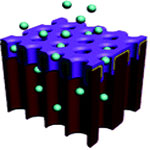 Controlled-release drug delivery techniques use various responsive materials and stimuli such as an implanted heat source or electronic chip to trigger the drug release from the implanted reservoir. Among many actively controlled stimuli for pulsatile drug delivery, the electrical signal would be the best source because it is portable and does not need large or special equipment to trigger it. The signal can also be easily and on-demand controllable, and long cycles are possible. Furthermore, when a sensor or microchip system is combined, the feedback and remote control outside the body is possible. Researchers have now developed a new drug delivery device for pulsatile and on-demand drug release based on electrically actuatable nanoporous membranes made of polypyrrole.
Controlled-release drug delivery techniques use various responsive materials and stimuli such as an implanted heat source or electronic chip to trigger the drug release from the implanted reservoir. Among many actively controlled stimuli for pulsatile drug delivery, the electrical signal would be the best source because it is portable and does not need large or special equipment to trigger it. The signal can also be easily and on-demand controllable, and long cycles are possible. Furthermore, when a sensor or microchip system is combined, the feedback and remote control outside the body is possible. Researchers have now developed a new drug delivery device for pulsatile and on-demand drug release based on electrically actuatable nanoporous membranes made of polypyrrole.
Feb 10th, 2011
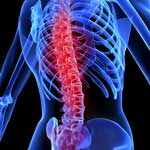 Spinal cord injury in humans remains a devastating and incurable disorder. Rapid progress in tissue engineering, especially electrospinning techniques that lead to micro- and nanofibrous flexible tubular scaffolds for nerve cell regeneration, may lead to promising therapies for spinal cord injuries. have now demonstrated the repair of a chronically injured spinal cord by attempting to replace the fluid-filled cyst found in these lesions with a neuroprosthetics conducive to tissue reconstruction and axonal regeneration. They managed, for the first time, to obtain a consistent regeneration of the nervous tissue in chronicized injuries at the spinal cord by using a nanostructured composite scaffold with no cells in it.
Spinal cord injury in humans remains a devastating and incurable disorder. Rapid progress in tissue engineering, especially electrospinning techniques that lead to micro- and nanofibrous flexible tubular scaffolds for nerve cell regeneration, may lead to promising therapies for spinal cord injuries. have now demonstrated the repair of a chronically injured spinal cord by attempting to replace the fluid-filled cyst found in these lesions with a neuroprosthetics conducive to tissue reconstruction and axonal regeneration. They managed, for the first time, to obtain a consistent regeneration of the nervous tissue in chronicized injuries at the spinal cord by using a nanostructured composite scaffold with no cells in it.
Feb 2nd, 2011
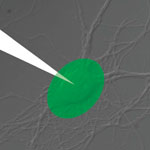 One area of nanobiotechnology that will have a massive impact on improving the live of disabled people lies at the interface (literally) between artificial functional materials and living neuronal tissues. Neuroprosthetics is an area of neuroscience that uses artificial microdevices to replace the function of impaired nervous systems or sensory organs. Different biomedical devices implanted in the central nervous system, so-called neural interfaces, already have been developed to control motor disorders or to translate willful brain processes into specific actions by the control of external devices. One are that has been quite challenging is the communication between biological tissues and artificial sensors - something that is key in building artificial retinas, for instance. Researchers in Italy have now reported the functional interfacing of an organic semiconductor with a network of cultured primary neurons.
One area of nanobiotechnology that will have a massive impact on improving the live of disabled people lies at the interface (literally) between artificial functional materials and living neuronal tissues. Neuroprosthetics is an area of neuroscience that uses artificial microdevices to replace the function of impaired nervous systems or sensory organs. Different biomedical devices implanted in the central nervous system, so-called neural interfaces, already have been developed to control motor disorders or to translate willful brain processes into specific actions by the control of external devices. One are that has been quite challenging is the communication between biological tissues and artificial sensors - something that is key in building artificial retinas, for instance. Researchers in Italy have now reported the functional interfacing of an organic semiconductor with a network of cultured primary neurons.
Jan 26th, 2011
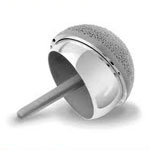 Imagine intelligent medical implants that can continuously monitor their condition inside the body and autonomously respond to changes such as infection by releasing anti-inflammatory agents. Thanks to nanotechnology, medical research is moving quickly towards this goal. A new study shows that the use of polypyrrole films as electrically controlled drug release devices on implant surfaces can potentially improve bone implants. By electrodepositing antibiotics or anti-inflammatory drugs in a polymer coating on medical devices, researchers demonstrate that such drugs can be released from polypyrrole on demand - by applying a voltage - and control cellular behavior important for orthopedic applications, i.e. inhibit inflammation and kill bacteria.
Imagine intelligent medical implants that can continuously monitor their condition inside the body and autonomously respond to changes such as infection by releasing anti-inflammatory agents. Thanks to nanotechnology, medical research is moving quickly towards this goal. A new study shows that the use of polypyrrole films as electrically controlled drug release devices on implant surfaces can potentially improve bone implants. By electrodepositing antibiotics or anti-inflammatory drugs in a polymer coating on medical devices, researchers demonstrate that such drugs can be released from polypyrrole on demand - by applying a voltage - and control cellular behavior important for orthopedic applications, i.e. inhibit inflammation and kill bacteria.
Jan 25th, 2011
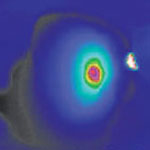 Chemotherapeutics generally show a delicate balance between maintaining a high enough dose to kill cancer cells while avoiding a dose so high that it causes severe toxic effects. One of the many promises of nanomedicine is a class of nanoscale drug delivery vehicles that can pinpoint cancer cells and deliver their tumor-killing payload right into cancer cells with high efficiency and no side effects. Based on a novel silica 'nanorattle' structure, a research team further extended their work to fabricate 'all-in-one' multifunctional gold nanoshells on silica nanorattles which combine remote-controlled photothermal therapy with chemotherapy. The results indicate that a combination of hyperthermia and chemotherapeutic agents is an encouraging approach to optimizing cancer therapy for the synergistic effects are greater than the two individual treatments alone.
Chemotherapeutics generally show a delicate balance between maintaining a high enough dose to kill cancer cells while avoiding a dose so high that it causes severe toxic effects. One of the many promises of nanomedicine is a class of nanoscale drug delivery vehicles that can pinpoint cancer cells and deliver their tumor-killing payload right into cancer cells with high efficiency and no side effects. Based on a novel silica 'nanorattle' structure, a research team further extended their work to fabricate 'all-in-one' multifunctional gold nanoshells on silica nanorattles which combine remote-controlled photothermal therapy with chemotherapy. The results indicate that a combination of hyperthermia and chemotherapeutic agents is an encouraging approach to optimizing cancer therapy for the synergistic effects are greater than the two individual treatments alone.
Jan 17th, 2011
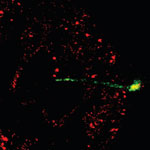 With the advance of nanomedicine, bio-nanotechnology, and molecular biology, researchers require tools that allow them to work on a single cell level. These tools are required to probe individual cells, monitor their processes, and control/alter their functions through nanosurgery procedures and injection of drugs, DNA etc. - all without damaging the cells, of course. Researchers have now developed a multifunctional endoscope-like device, using individual CNTs for prolonged intracellular probing at the single-organelle level, without any recordable disturbance to the metabolism of the cell. These endoscopes can transport attoliter volumes of fluid, record picoampere signals from cells, and can be manipulated magnetically. Furthermore, the tip deflects with submicrometer resolution, and the attachment of gold nanoparticles allows intracellular fingerprinting using surface-enhanced Raman spectroscopy (SERS).
With the advance of nanomedicine, bio-nanotechnology, and molecular biology, researchers require tools that allow them to work on a single cell level. These tools are required to probe individual cells, monitor their processes, and control/alter their functions through nanosurgery procedures and injection of drugs, DNA etc. - all without damaging the cells, of course. Researchers have now developed a multifunctional endoscope-like device, using individual CNTs for prolonged intracellular probing at the single-organelle level, without any recordable disturbance to the metabolism of the cell. These endoscopes can transport attoliter volumes of fluid, record picoampere signals from cells, and can be manipulated magnetically. Furthermore, the tip deflects with submicrometer resolution, and the attachment of gold nanoparticles allows intracellular fingerprinting using surface-enhanced Raman spectroscopy (SERS).
Dec 15th, 2010
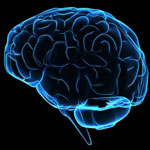 The use of minute particles as drug carriers for targeted therapy has been studied and discussed for more than 20 years. A selective accumulation of active substances in target tissues has been demonstrated for certain so-called nanocarrier systems that are administered bound to pharmaceutical drugs. Great expectations are placed on nanocarrier systems that can overcome natural barriers such as the blood-brain barrier (BBB) and transport the medication directly to the desired tissue and thus heal neurological diseases that were formerly incurable. The BBB represents the border between the circulating blood and the fluid in the central nervous system. It functions to protect the sensitive nerve cells from foreign substances and infections from the blood. Whether nanoparticles enter the central nervous system unintentionally and induce health problems is also being debated.
The use of minute particles as drug carriers for targeted therapy has been studied and discussed for more than 20 years. A selective accumulation of active substances in target tissues has been demonstrated for certain so-called nanocarrier systems that are administered bound to pharmaceutical drugs. Great expectations are placed on nanocarrier systems that can overcome natural barriers such as the blood-brain barrier (BBB) and transport the medication directly to the desired tissue and thus heal neurological diseases that were formerly incurable. The BBB represents the border between the circulating blood and the fluid in the central nervous system. It functions to protect the sensitive nerve cells from foreign substances and infections from the blood. Whether nanoparticles enter the central nervous system unintentionally and induce health problems is also being debated.
Dec 8th, 2010
 Research to develop sensors that can rapidly detect biomarkers (associated with certain diseases such as cancer) in whole blood, ideally at the point of care, and when the protein biomarker level in blood is very low (i.e. the disease is in an early stage) is being advanced by nanosensor technology. In a recent development, scientists in Spain have developed a rapid nanochannel-based immunoassay capable of the filtering and subsequent detection of proteins in whole blood without any sample preparation. This is the first time that a simple assay to detect proteins in whole blood using nanochannels has been achieved. This is a simple device and set-up that allows nanochannels to achieve such the double functionality of filtering and detection on the same platform.
Research to develop sensors that can rapidly detect biomarkers (associated with certain diseases such as cancer) in whole blood, ideally at the point of care, and when the protein biomarker level in blood is very low (i.e. the disease is in an early stage) is being advanced by nanosensor technology. In a recent development, scientists in Spain have developed a rapid nanochannel-based immunoassay capable of the filtering and subsequent detection of proteins in whole blood without any sample preparation. This is the first time that a simple assay to detect proteins in whole blood using nanochannels has been achieved. This is a simple device and set-up that allows nanochannels to achieve such the double functionality of filtering and detection on the same platform.
 Subscribe to our Nanotechnology Spotlight feed
Subscribe to our Nanotechnology Spotlight feed





